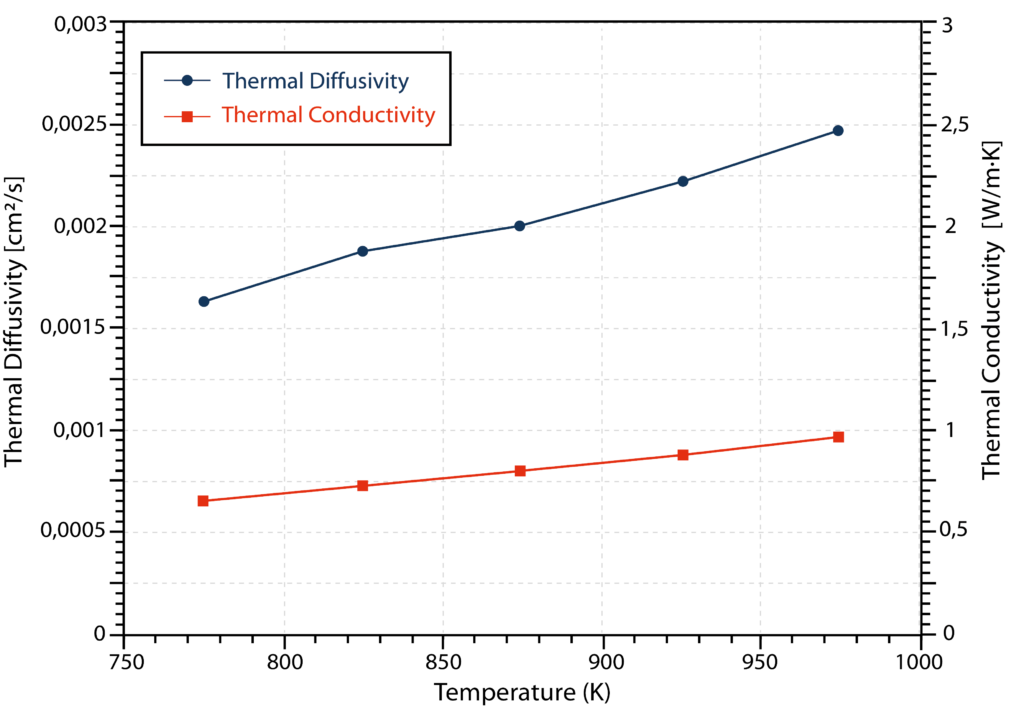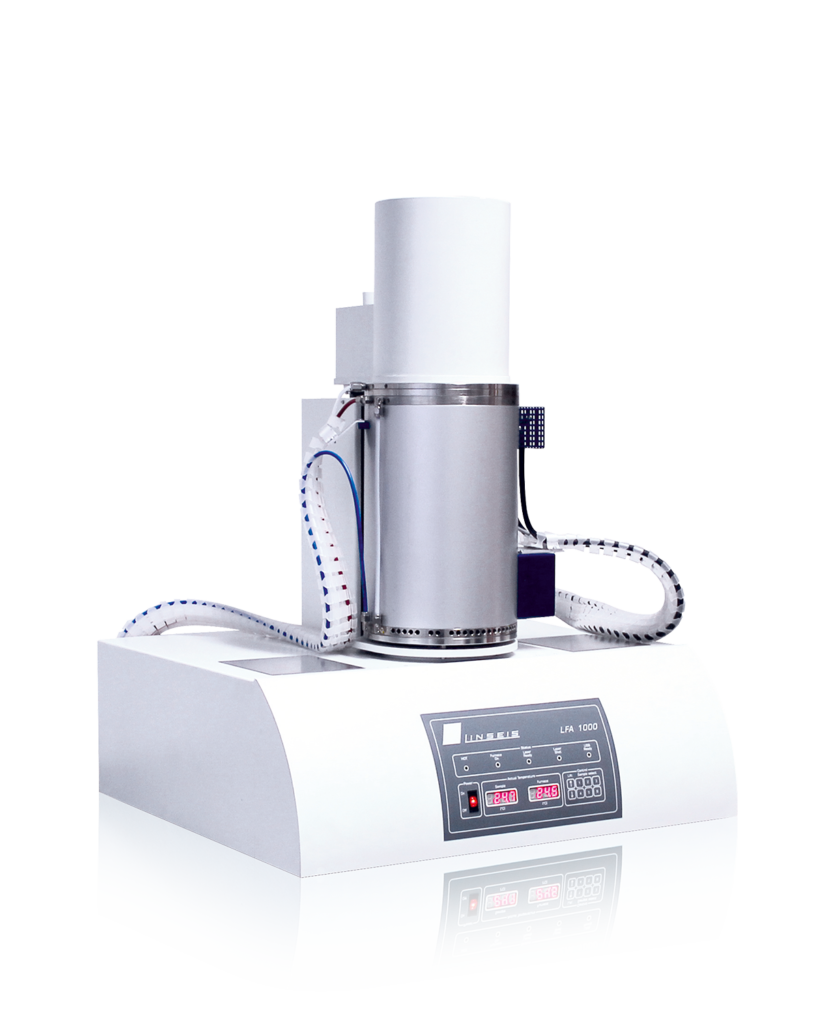The measurement of the thermal diffusivity of Molten Salt FLiNaK presented here was carried out in a helium atmosphere from 773 K to 973 K using a Linseis LFA L52 system.
The specially designed crucible was inserted into a sample robot that can hold up to three samples simultaneously. Before the actual test, the sample was preheated slightly above the melting temperature several times to allow degassing of the material and thus avoid bubbles in the molten salt.
The thermal conductivity of the molten salt can be calculated using the thermal diffusivity measured by the LFA and the data on specific heat capacity and density using the following relationship:

In summary, the thermal conductivity in the temperature range from 773 K to 973 K of FLiNaK liquid salt was determined to be 0.652-0.927 W/m∙K with an uncertainty of +/- 0.023 W/m∙K [1]. This shows good agreement with the previously published values.
In conclusion, it can be said that the laser flash technique in combination with the specially developed crucible and the combined model of Dusza is a reliable method for determining the thermal diffusivity of molten salts at high temperatures.
*Cf. X.-H. An et al. (2015): thermal conductivity of high temperature fluoride molten salt determined by laser flash technique, in: International Journal of Heat and Mass Transfer, pp. 872 – 877.

